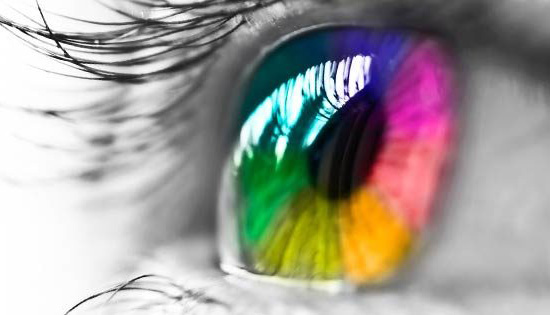[et_pb_section bb_built=”1″][et_pb_row][et_pb_column type=”4_4″][et_pb_text _builder_version=”3.13.1″]
Color blindness is a visual disability that prevents distinguishing certain colors.
This is due to the failure or malfunction of one or more of a cone type. The human eye is formed by different structures that interact to allow the reception of visual stimuli. Color blindness is not a serious disorder, does not imply any type of danger to health, and people who suffer from it can develop their daily activities with total normality.
One of the components of the eye is the retina, in this part of the eye are the only cells capable of capturing color and light, are the so-called cones and rods.
There are three types of cones, each of which can capture the wavelengths equivalent to red, blue and green, thanks to its content in pigments (molecules that capture light at different wavelengths – which is equivalent to the different colors). By means of the different intensities captured by the three types of cones, it is possible to distinguish all the colors that are part of the visible light spectrum.
Dichromatism: is the most common way in which people with this type of color blindness have difficulty in establishing the difference between red and green colors.
The dichromatism: is the lack of cones responsible for capturing the blue tones; in this case, individuals will often confuse blue and yellow colors. These types of color blindness are called, since the individual has only two types of cones.
Anomalous trichromatism: In this case, the individual presents the three types of cones, but there is some deficiency in them that prevents a completely normal operation.
Achromatopsia: it is the most serious case of the individual who suffers because it appreciates only differences in the gray scale.
Causes of color blindness
This alteration has a genetic origin; It is a disorder of inheritance linked to sex, ie the affected gene is in one of the sex chromosomes (the human being has 46 pairs of chromosomes of which 22 pairs are autosomal and one pair is sexual).
Currently there is no treatment for this disorder.
Always take care of your health with a unique and efficient service. Visit Pharmamedic.
[/et_pb_text][/et_pb_column][/et_pb_row][/et_pb_section]






